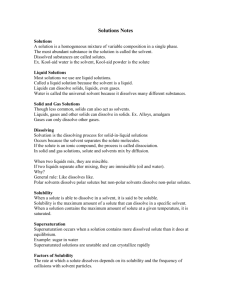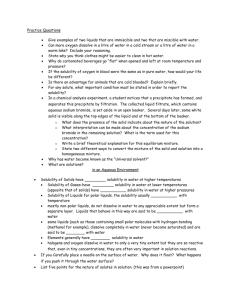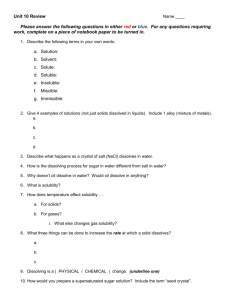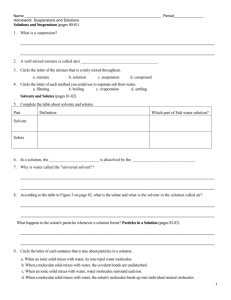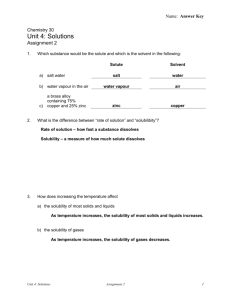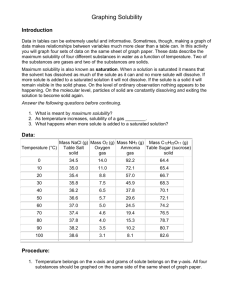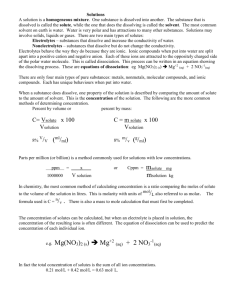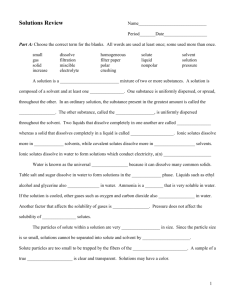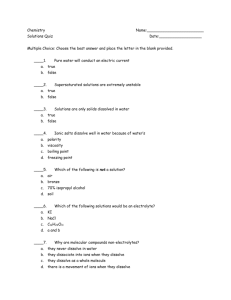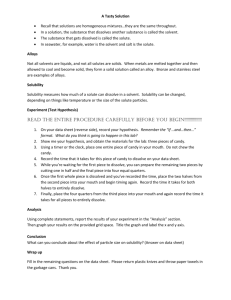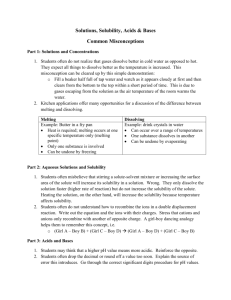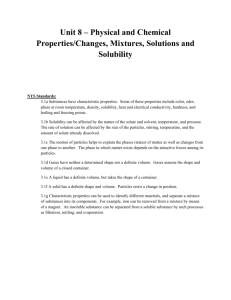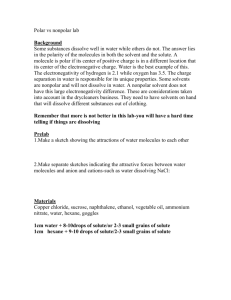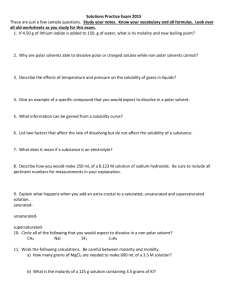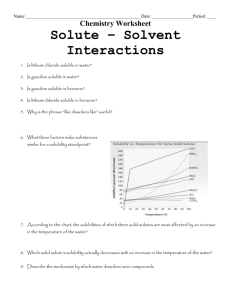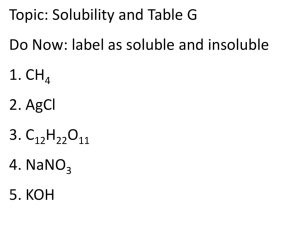File
advertisement
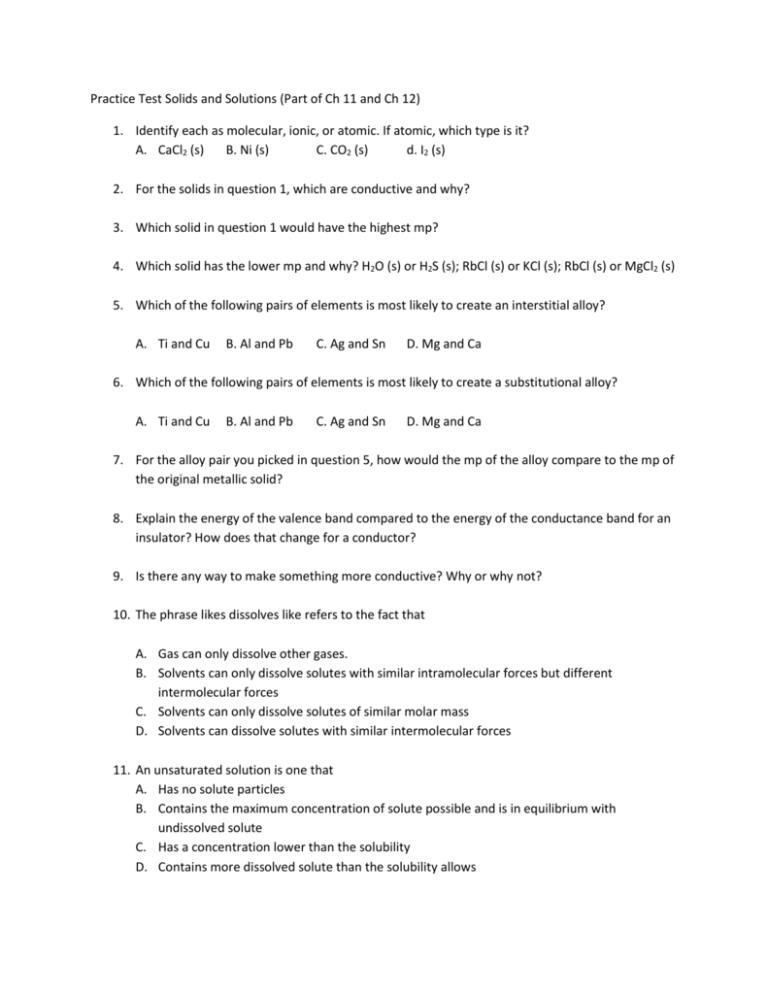
Practice Test Solids and Solutions (Part of Ch 11 and Ch 12) 1. Identify each as molecular, ionic, or atomic. If atomic, which type is it? A. CaCl2 (s) B. Ni (s) C. CO2 (s) d. I2 (s) 2. For the solids in question 1, which are conductive and why? 3. Which solid in question 1 would have the highest mp? 4. Which solid has the lower mp and why? H2O (s) or H2S (s); RbCl (s) or KCl (s); RbCl (s) or MgCl2 (s) 5. Which of the following pairs of elements is most likely to create an interstitial alloy? A. Ti and Cu B. Al and Pb C. Ag and Sn D. Mg and Ca 6. Which of the following pairs of elements is most likely to create a substitutional alloy? A. Ti and Cu B. Al and Pb C. Ag and Sn D. Mg and Ca 7. For the alloy pair you picked in question 5, how would the mp of the alloy compare to the mp of the original metallic solid? 8. Explain the energy of the valence band compared to the energy of the conductance band for an insulator? How does that change for a conductor? 9. Is there any way to make something more conductive? Why or why not? 10. The phrase likes dissolves like refers to the fact that A. Gas can only dissolve other gases. B. Solvents can only dissolve solutes with similar intramolecular forces but different intermolecular forces C. Solvents can only dissolve solutes of similar molar mass D. Solvents can dissolve solutes with similar intermolecular forces 11. An unsaturated solution is one that A. Has no solute particles B. Contains the maximum concentration of solute possible and is in equilibrium with undissolved solute C. Has a concentration lower than the solubility D. Contains more dissolved solute than the solubility allows 12. Pressure has an appreciable effect on the solubility of ____ in liquids A. Gases only B. solids only C. liquids only D. all states of matter E. solids and liquids only 13. As temperature increases, the solubility of a solid in water A. Increases if dissolution of the solid in water is exothermic B. Increases if dissolution of the solid in water is endothermic C. Increases regardless of the enthalpy D. Decreases E. Stays the same 14. Ammonia is soluble in water due to which solute-solvent force of attraction? A. London dispersion-dipole B. Ion-dipole C. H- bonds D. London dispersion forces only 15. What mass of aluminum nitrate is required to prepare 500.0 mL of a solution that is 0.100 M? 16. A solution was prepared by dissolving 23.7 g of CaCl2 in 375 g water. The density of the resulting solution was 1.05 g/mL. What is the [Cl-] in the solution? 17. Calculate the M and mole fraction of methanol in a solution composed of 26.5 g methanol and 244 g water. Assume the density of the solution is 0.975 g/mL.


